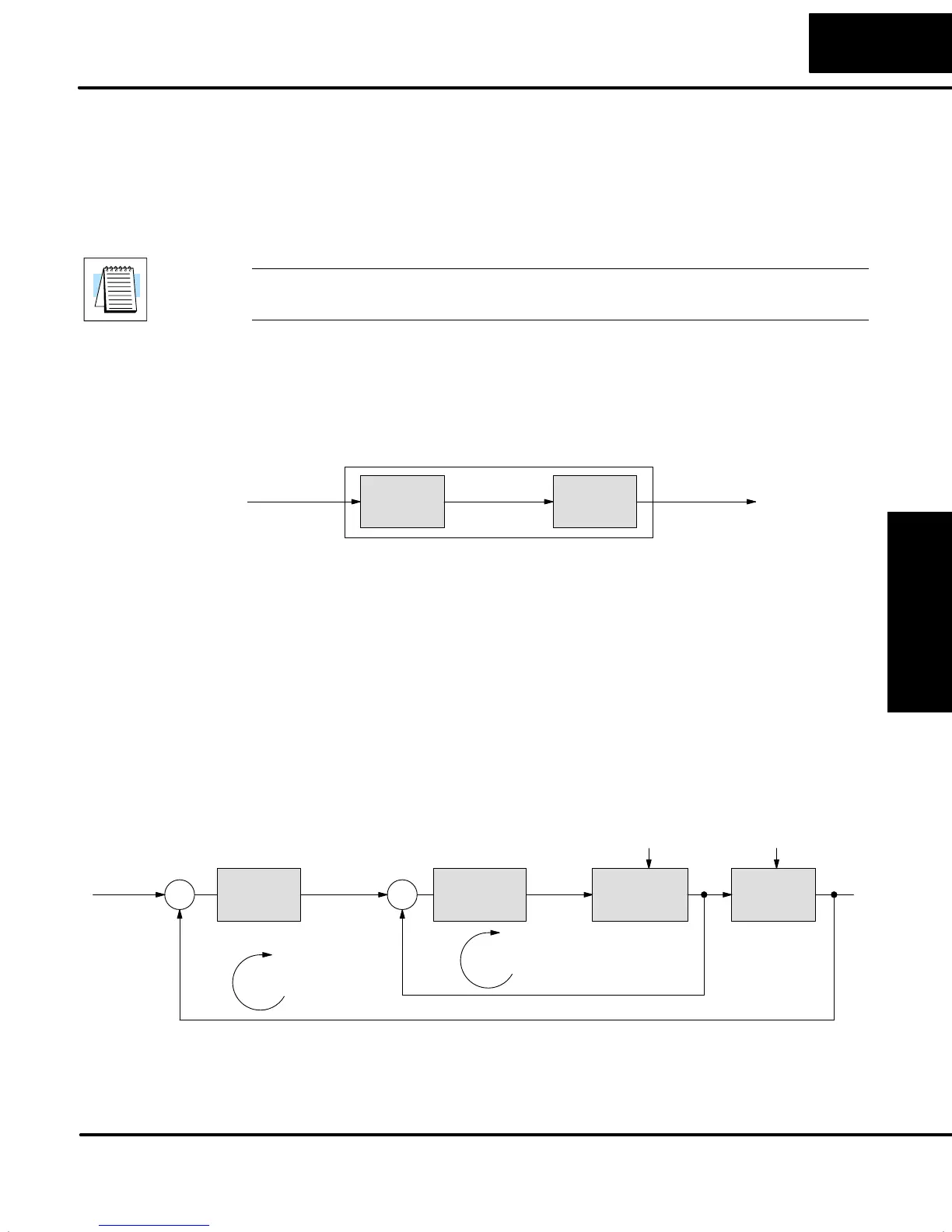PID Loop Operation
Maintenance
8–51
PID Loop Operation
Cascade Control
Cascaded loops are an advanced control technique that is superior to individual loop
control in certain situations. As the name implies, cascade means that one loop is
connected to another loop. In addition to Manual (open loop) and Auto (closed loop)
Modes, the DL05 also provides Cascaded Mode.
NOTE: Cascaded loops are an advanced process control technique. Therefore we
recommend their use only for experienced process control engineers.
When a manufacturing process is complex and contains a lag time from control input
to process variable output, even the most perfectly tuned single loop around the
process may yield slow and inaccurate control. It may be the actuator operates on
one physical property, which eventually affects the process variable, measured by a
different physical property. Identifying the intermediate variable allows us to divide
the process into two parts as shown in the following figure.
Intermediate
Variable
Process A Process B
Control input
Process
Variable (PV)
PROCESS
The principle of cascaded loops is simply that we add another process loop to more
precisely control the intermediate variable! This separates the source of the control
lag into two parts, as well.
The diagram below shows a cascade control system, showing that it is simply one
loop nested inside another. The inside loop is called the minor loop, and the outside
loop is called the major loop. For overall stability, the minor loop must be the fastest
responding loop of the two. We do have to add the additional sensor to measure the
intermediate variable (PV for process A). Notice the setpoint for the minor loop is
automatically generated for us, by using the output of the major loop. Once the
cascaded control is programmed and debugged, we only need to deal with the
original setpoint and process variable at the system level. The cascaded loops
behave as one loop, but with improved performance over the previous single-loop
solution.
S
+
–
Setpoint
Loop B
Calculation
S
+
–
Loop A
Calculation
Process A
(secondary)
Process B
(primary)
PV, Process A
PV, Process B
Output B/
Setpoint A
Major
Loop
Minor
Loop
External
Disturbances
External
Disturbances
Output A
One of the benefits to cascade control can be seen by examining its response to
external disturbances. Remember the minor loop is faster acting than the major
loop. Therefore, if a disturbance affects process A in the minor loop, the Loop A PID
calculation can correct the resulting error before the major loop sees the effect.
Introduction

